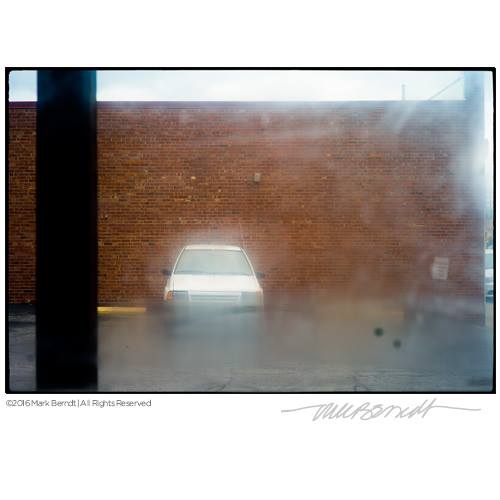
I don’t know about you, but I think it’s magical, or spiritually conceived, or the power of a universe beyond my comprehension, when something like this comes together in front of me – a convergence of nothing that makes shapes and colors and light and emotion – and I’m able to step outside myself, away from the pressures of taxes and elections and cat throw-up and bills – for a single moment, long enough to see what’s right in front of my face and pull the camera from the bag, as much as from my soul, and fire it up and compute the necessary exposure calculations just right and adjust the focus so’s I’ll not screw it up showing the wrong part, and keep the things inside the frame that aren’t supposed to be forgotten forever outside the frame, and pull it all together for that fraction of a second that snags the moment that says “I saw this and want to share it with you because I don’t really care if you think it’s important or not but it IS to me and I LIVE to infect just one of you with the magic of the thing I saw and captured and made you look at and share it’s vibration and energy too.
I can only hope that I can do this for the rest of my life without regard for whether it’s viewed or received or appreciated or paid for, because the honest truth is that I do it for myself – it’s a selfish and self-perpetuating indulgence that must satisfy me first, and then anyone else? … whatever. And if it wasn’t that, it would be in the service of a client, a paycheck, a meal and a bed – and that would ultimately compromise my process, and that, well… that, is just no longer on the table.
©2016 Mark Berndt | All Rights Reserved
Posted on
Friday, July 22nd, 2016 at
1:30 PM

Except for that woodpecker in my neighbor’s tree and a whish of traffic, the conversation between terriers through a fence a block away, some faint skateboard scratching on the sidewalk, alternating chirps and birdsongs, the padded footfalls of an avid jogger, one chattering squirrel, that distinctive upshifting from a muffler-challenged scooter, the doppler echo of classic rock out the window of a passing pickup, an invisible Lear on approach to downtown, kids laughing (but I see no kids), Louis’ yawn, tiny chicklet sounds from my laptop, and whatever is said between a robin and a worm…
except for all that
it is silent
in this surreal hour when the cloud-covered sky chokes the end of the day, and the light fades, and the exposure difference between available and incandescent balances in the middle to hand off the world to the kingdom of night.
©2016 Mark Berndt | All Rights Reserved
Posted on
Friday, July 22nd, 2016 at
1:04 PM
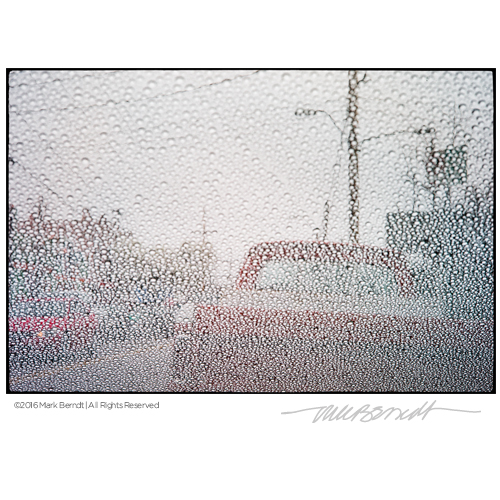
Louis and I woke at 5 this morning to thunder cracks and the violent gestures of trees from which we were separated by only a thin pane of glass and a wisp of curtain. Committed to awake, and a fresh cup of coffee and half-a-can of some chicken-vegetable-cat-casserole later (the coffee mine, the chicken for Louis), we decided to watch the night subside and listen as the storm made its Doppler crawl across the map.
Downstairs my slideshow screensaver of some 3000 images was still cycling on the flat screen, and as I cracked open the laptop to continue research for an upcoming talk I was reminded of the power that images have to timeline a life. It is obvious, I know, that pictures prompt memories – but to sit and succumb, at 5-second intervals, to these records of presence, self-made proof of my own existence, I remember places and temperature and weather and smell, state-of-mind and wonder and confusion and intuition. Magic, really, how much non-visual information they contain.
On the laptop I read a review of another new smartphone – the latest miracle-phone – which said nothing about the telephonic capabilities but exclusively touted its DSLR-killer camera through the endorsements of “pro” photographers convinced it’s all the camera they’ll ever need, while the reviewer detailed the shortcomings of the image files – over-noise-reduced blobby jpegs with little detail and lots of grain made on a microscopic sensor, but using 2 lenses instead of one. This is the latest technology designed, or at least described, to replace your camera.
And so I confess that I’m pretty thrilled (hurt my arm a bit trying to pat myself on the back, actually) that my little collection of memories flashing on the screen, inconsequential to most and which may never be viewed by more than the handful of visitors who witness my TV at rest, were made on professional cameras with enough resolution and rigorous processing to not only realize and recall the full experience which they record, but with the potential for display and reproduction beyond the ‘technical’ limits of the medium – on-screen, in books and as prints, even BIG prints – that will satisfy the professionally high standards of quality that I have worked a lifetime to achieve.
How disappointed I would be had I jettisoned my convictions about the value of exquisite capture for the convenience of expedient and inferior tools, and was limited to phone screens and emails to experience my life’s work.
My friend and mentor Bob Jones tells the story of his assignments shooting college football footage in the 16mm film days, when every frame had to be (expensively) processed to see what you got. “Only shoot the long passes and the touchdowns!” were his instructions before each game. Today “The best camera is the one you have with you.” recalls the same impossible (ludicrous?) thinking. If you make your greatest picture with an inferior camera, you end up with an inferior image – and the disappointment of knowing that you can’t go back and do it right, and that you really knew better all along.
As I always have, I advocate an open-carry pro-camera policy for professional photographers. Write your congressman.
©2016 Mark Berndt | All Rights Reserved
Posted on
Saturday, July 9th, 2016 at
5:33 AM
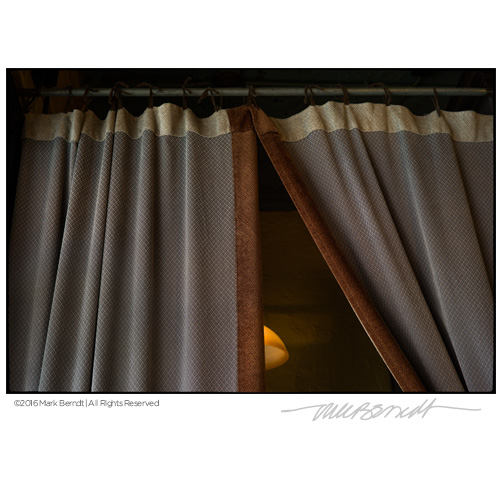
For some, the earliest childhood memories are from when they were only months old, just a sound or the sky or the safety of arms. Others remember events from an age when experts say they shouldn’t be able to remember anything at all.
My memory’s not as good as that, but one of my early memories – I was maybe 3 or so – is in my head as a photograph. It’s a B&W picture of my front yard – of me and my brother and our next-door neighbor Patty – or at least I think I’m in it. Or maybe my Dad was in it and I was not. But even if I am in it, I remember the photograph as being from my point-of-view, 3-year-old high, as if I pressed the shutter.
So with that simple scene as my early memory, and now a lifetime of making images, I guess I can say pretty confidently that I am, maybe always have been, a photographer. But I’m pretty sure I’m not an artist. I mean, I didn’t study art, don’t have any art degrees, I can’t read or speak artspeak without just messing it all up, I don’t even know anyone named Art. I colored inside the lines, preferred staying clean, excelled in math, side-stepped drugs. I’m not in collections or shown in museums, I infrequently exhibit and even more rarely sell. And my ‘fine art coffee table book’… well let’s just thank the lord for ‘print on demand’.
Art is everywhere. Everyone I know is an Artist. The Art World is full of artists, but also people and companies and organizations and schools and foundations and websites and blogs and non-profits who support artists, many by offering training programs for artists to be better artists, more successful artists, and providing artists with exhibitions and competitions and fundraisers and galas where artists have an opportunity to pay to submit their art, or even donate their art, in support of these institutions that support the arts. Artists pay to be reviewed and juried and curated and written about and matriculated in classrooms and contests and festivals and workshops and seminars. Artists attend the art openings of their fellow artists too – but it’s rare that art is actually purchased by artists. And when it is, artists give artists an artist’s discount because they know how hard it is to make enough money as an artist to be able to actually own another artist’s art.
I wonder, at the end of the day, if the art world isn’t just a big art installation, a performance piece in defense of a masters thesis launched centuries ago in a cave by a guy with a charred stick and a radical idea, whose final exam became our reality. And if we could follow the path (is it the artist’s way?) it would lead to the cloaked mouth of that cave where the artspeak still bellows forth, and we’re warned by the guard to pay no attention to the man behind the curtain in the leopard pants with green hair and a walking stick wearing love beads and a fur wrap – that powerful wizard named – Art.
* Oh, and please don’t forget about my workshop this weekend!
©2016 Mark Berndt | All Rights Reserved
Posted on
Saturday, May 21st, 2016 at
3:30 PM
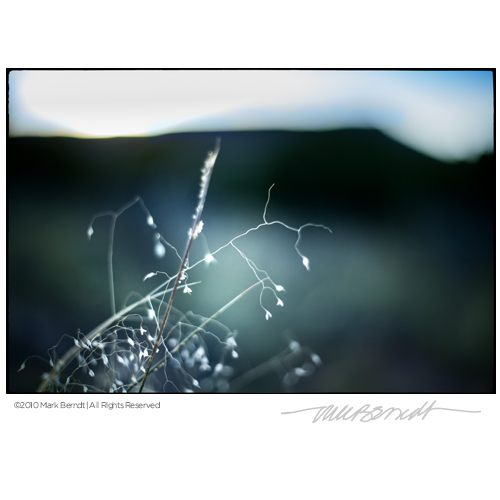
Revisiting old digital files, old hard drives of images, previous versions of RAW processing, is just the same as looking through old contact sheets. And the same rules of relative image importance apply. When you edit and select and finish the images that are meaningful at the time of the shoot, they reflect a current, specific, and valid state-of-mind. But later review can reveal a shift in that state-of-mind, where age, experience, and situation sees importance in different images. Later they are meaningful in new and, let’s say, more profound ways.
I found the image above in the ‘selects’ from a shoot in 2010 (but not in the ‘final files’) – from a visit Pilar and I made to her Mom’s house in Embudo (my first time there – and early in our relationship), wandering, photographing, talking, exploring, relaxing, experiencing, connecting – and although I obviously experienced this blue-glow of dusk and found it compelled me to make this photograph, I finished other images from that trip that held significance I understood at the time.
Having re-discovering and posted this image yesterday, I started work on a poem at breakfast this morning at my most inspiring coffeehouse/restaurant – Room 39. The picture prompted the recollection and poem, not the memory itself. And in that I find the value of photography.
I Visit This Image That’s Six Years Old
I visit this image that’s 6 years old
to remember the day that I first said my hello
to the high desert dusk
and savored the piñon
and feasted on morsels of lingering sun
spun in the teardrops of the Indian ricegrass
a reverse silhouette against a mountain, and sky
that night – no orange ball
no fiery star extinguished on exit
but a soft slate blue gauze
tipped with cool greens and shadow
to quiet my eye
at the onset of night
more than a mile high
like a desert dessert
this last flavor
lingered
as we slipped
wrapped in silence
to sleep.
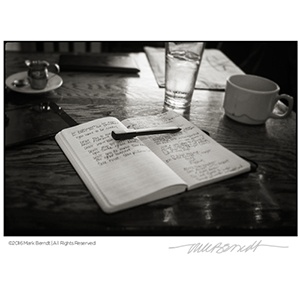
©2016 Mark Berndt | All Rights Reserved
Posted on
Saturday, May 21st, 2016 at
3:23 PM

I remember stopping by Deb’s house on Stanley in the late afternoon, sometime in the early 90’s. She wasn’t home, but I made 2 photographs from outside as the sun did that warm hard cut straight into the front of her house while I waited for her to answer the bell.
The house was quiet. I don’t even remember the dogs barking, so they were probably riding around with her in that big black Mercedes, and the house seemed both vulnerable and welcoming to a photographic predator like myself.
I saw this scene through a side window of the breakfast room by the front door, and I loved what the light did to the flowers. I know the camera was the M6, the film was Kodachrome, and although I usually had the 35mm Summicron on it, this looks a bit more like the 50, wide open, what with the flowers left intentionally soft and the focus thrown to that photograph of her in the shadows of the far corner cabinet.
This is magical LA light. I’d know it without the red/yellow boost from K64 1/2-stop under, the ubiquitous ’40’s-era louvered glass windows, and even without her impeccable style.
©2016 Mark Berndt | All Rights Reserved
Posted on
Saturday, May 21st, 2016 at
3:16 PM
 What is the value of an image?
What is the value of an image?
For decades it was right there, irrefutable, numbers on a page, invoiced and remitted, value exchanged for value received, with a wicked appreciation of its power, and respect for the art and craft of its making.
Factor in inflation, and value should increase. And in a world that no longer reads, that increase should be exponential – including, and beyond, the numbers on the page.
But inflation has a one way relationship with photography. Expenses now exceed any predictable calculation, yet rates have eluded adjustment for over half-a-century. The financial hit is formidable, but the psychological destruction is devastating and far-reaching.
If photography must now cost less to buy than to produce, who will be left to create it?
And just what IS the value of an image?
©2016 Mark Berndt | All Rights Reserved
Posted on
Friday, April 29th, 2016 at
7:03 PM
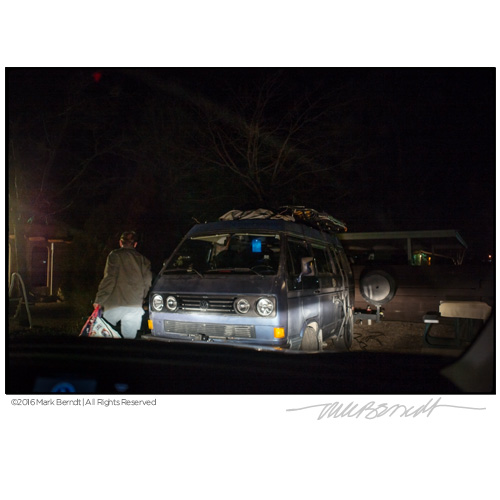
Eddie
without need for an agenda
Eddie’s on his bucket list trip
in a ’91 VW bus whose original paint
hides the hand-restored mechanics
and muffles the streaming soundtrack
of an artist of the camera, and cuisine.
last Thursday night
he set our mouths on fire
with a meal of chiles and spices
(and their alcoholic antidotes)
and hours of stories
from the days of rock ‘n’ roll.
this is my portrait
of the man I met that night,
who, as natural a chef and raconteur
as any man can be,
made a bee-line for the refuge
of his mean, clean, time machine
the happiest of campers
in a tin can home on wheels.
©2016 Mark Berndt | All Rights Reserved
Posted on
Sunday, February 14th, 2016 at
10:31 PM
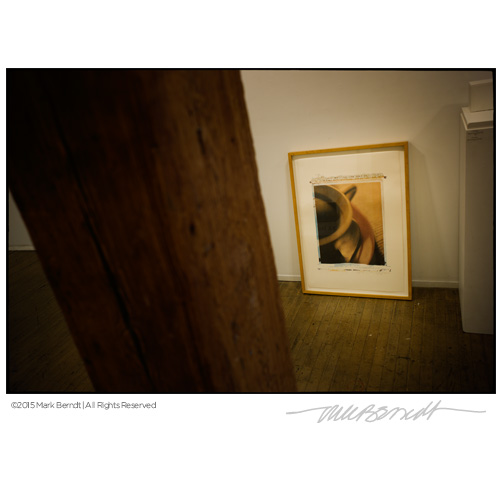
Well, there’s print #3/15 of “Honest Cup O’ Joe” (titled for obvious reasons when you see it up close) waiting for a nail at KC Artists Coalition’s PUBLIC HANGING next Friday night. But that designation – #3/15 – doesn’t tell the whole story.
This is actually #3 of the first 3 prints in the edition, rare and irreplaceable 20-year-old vintage Iris prints made by R Mac Holbert at Nash Editions in Manhattan Beach, CA in 1995 from my original 4×5″ Polaroid transfer. I had made the original with a Horseman 450-LX, a Nikkor 210mm lens and Polaroid Type 59 film on Arches paper in 1993, so we printed these prints on uncoated Arches as well (this was before coated digital papers) to bring the process full-circle.
Print #1 is on my living room wall, #2 sold over a decade ago, and this one, with the Nash Editions “chop” in the lower left corner, will be available to purchase at KCAC at 201 Wyandotte in the River Market next Friday night, November 20, 2015 from 6-9pm – and of course, if it doesn’t sell then it’s still available from me. (Remember, the purpose of the show is to SELL work).
Delivering this print today brought back all sorts of memories of the pioneering days of digital printmaking – Photoshop 3, my first MacIntosh (a Power Mac 8500 with 32mb RAM and 2gb hard drive), my state-of-the-art Agfa Arcus II scanner and my feeble Epson Stylus XL printer. Jonathan Reff, my friend and Certified Apple Reseller at the time, helped me navigate the scary waters from PC to Mac and with his expertise built me my first digital darkroom. Those early days were still about shooting film, then scanning and processing and the desire to make prints – it’s always been about prints. The little Epson was no match for the courageous dis- and re-mantling that Mac and Graham were doing to those Iris printers, and Mac Holbert spent generous amounts of time to helping me understand scanning resolutions, color management and digital printmaking so that I could make files he could work with – and then made these beautiful prints. Thanks Mac.
I did several projects with Mac at Nash. They took a classic printmaking approach to the art, and were meticulous about their work. That meant it took several weeks to see a first proof, especially if they were doing the scanning, and about as long to see a final print – especially if they were busy – which they always were.
I’d ride down on my motorcycle to approve and sign the BAT proofs and start the printing phase. When the prints were ready I’d drive down in the car so I could bring my prints home. We’d compute a final paper size, they would hand-tear the edges and “chop” the print, I’d sign, and then they’d sleeve the final prints and put them into tubes for safe travel.
I was a little fish in the big pond of photographers, artists and celebrities who were lining up to explore this new technology, but Mac always made me feel like an equal player. I was thrilled to be asked to sign a release for them to feature one of my images on a page in their book “Nash Editions: Photography and the Art of Digital Printing” – a fascinating record of the early days of digital photography, way before all the stuff we take for granted now.
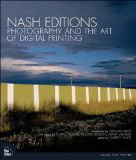
After a ‘digital negatives for platinum printing’ class with Dan Burkholder at the Santa Fe Workshops, I was on the verge of buying a couple of IRIS printers (they dropped incredibly in price around 1999, but you needed at least one spare machine for parts so you could keep one running) Epson introduced the 9600 with Ultrachrome inks and Hahnemuhle started coating their 310 gsm classic German Etching paper for digital printing. I jumped headlong into learning digital color printing (I mostly printed B&W before this in my darkroom, lab printing of my color transparencies was too expensive) and making paper print editions of many of my friend Kris Nelson’s brilliant oil paintings. The ability to proof-’til-I-dropped let me refine my understanding of the technology and develop my ability to see and reproduce color. I limited myself to matte papers because I never really thought of inkjet as “photo” printing, but rather producing my images as ‘works on paper’. This is not a judgement against digital printing, but rather an acknowledgement of the new medium, and an homage to the unique beauty of gelatin silver, platinum, Cibachrome and the classic analog C and R prints from the darkroom.
This digital thing has had quite an influence on my career and the development of my life as an artist. Adopting the technology early (certainly not as early as some – I still feel like I arrived late to the party) was a great opportunity, and the learning curve probably kept me from burning out for years since there was something new to master every day. Yet today, I find myself going backwards – towards a film way of working which actually makes me more comfortable, intentionally working with less-that-cutting-edge tools. Older digital cameras that slow me down, ISO limits more akin to pushed Tri-X that don’t tempt me to shoot in rooms with no light, last-century manual lenses with ‘character’ instead of today’s designed-in flaws that need software to correct them. My antique Epson 9600 keeps chugging along and while I’m making my “slow prints” its zen rhythms sound like words in the quiet air of the print studio.
I confess, I hold little romance for returning to film. I’m trapped by digital’s immediacy and prefer the pixel-accurate power of the digital darkroom. But I keep trying to create the pace, the anticipation and the wonder that happened when we used to shoot and then wait to see if what we thought we shot was really there. That in-between part – after the exposure when there was no picture yet – was a different kind of not-knowing than today where we wonder if the power will stay on, the drives won’t fail, the sun won’t spot. And so I’m dusting off the Hasselblad and the Horseman to make some new negatives and a couple of contact prints, just to see how it feels…
I’m not sure I’ll ever make prints #4 – 15 of “Honest Cup O’ Joe” unless some fabulous demand develops (let’s all pray for this to happen, just for fun!). These first three prints hold so much history that even if I do, there will always be, within the complete edition should it happen – this most-valued sub-edition of 3!
Posted on
Sunday, November 15th, 2015 at
4:37 PM
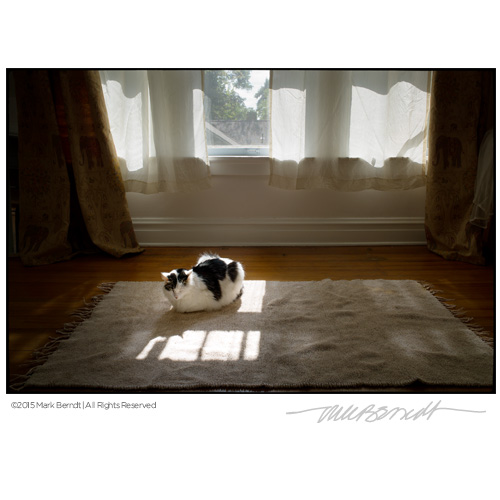 So, I take a little time out today to relax and have just started to browse through the NY Times when I see this – so I run downstairs to grab my camera and hope that Louis doesn’t move and a tornado doesn’t sweep through and take away the light and that my battery is charged and that the 28mm lens is on one of the bodies and that I don’t trip on the stairs coming back up because I’m setting the camera while I’m climbing so I’ll be pretty close when I arrive back in the room in case it’s a get-it-or-lose-it kind of photo situation (which they mostly are) and so I’m estimating (different from guessing) at ISO 160 and a 1/125th of a second at f/8-and-a-half (that’s a little more than “f9” on a DSLR which isn’t even a real f/stop to us old-timers) with the focus at about 4 1/2 feet (because I just can’t think in meters while I’m running) and then I get there and Louis is still asleep and doesn’t even know I left and there isn’t a cloud in the sky and my battery is at 89% and I check my meter and I’m only a 1/2-stop off and my trigger finger is itchy and – BOOM – a picture happens!
So, I take a little time out today to relax and have just started to browse through the NY Times when I see this – so I run downstairs to grab my camera and hope that Louis doesn’t move and a tornado doesn’t sweep through and take away the light and that my battery is charged and that the 28mm lens is on one of the bodies and that I don’t trip on the stairs coming back up because I’m setting the camera while I’m climbing so I’ll be pretty close when I arrive back in the room in case it’s a get-it-or-lose-it kind of photo situation (which they mostly are) and so I’m estimating (different from guessing) at ISO 160 and a 1/125th of a second at f/8-and-a-half (that’s a little more than “f9” on a DSLR which isn’t even a real f/stop to us old-timers) with the focus at about 4 1/2 feet (because I just can’t think in meters while I’m running) and then I get there and Louis is still asleep and doesn’t even know I left and there isn’t a cloud in the sky and my battery is at 89% and I check my meter and I’m only a 1/2-stop off and my trigger finger is itchy and – BOOM – a picture happens!
A picture that perfectly captures the simplicity and serenity and elegance and balance of a peaceful Sunday afternoon in a quiet house with inspiring light and a gentle breeze outside floating the distant whish of passing cars and the promise of Fall that lets one consider taking a little time out to relax and browse through the NY Times.
The camera never lies.
©2015 Mark Berndt | All Rights Reserved
Posted on
Sunday, October 4th, 2015 at
10:50 PM









 What is the value of an image?
What is the value of an image?


 So, I take a little time out today to relax and have just started to browse through the NY Times when I see this – so I run downstairs to grab my camera and hope that Louis doesn’t move and a tornado doesn’t sweep through and take away the light and that my battery is charged and that the 28mm lens is on one of the bodies and that I don’t trip on the stairs coming back up because I’m setting the camera while I’m climbing so I’ll be pretty close when I arrive back in the room in case
So, I take a little time out today to relax and have just started to browse through the NY Times when I see this – so I run downstairs to grab my camera and hope that Louis doesn’t move and a tornado doesn’t sweep through and take away the light and that my battery is charged and that the 28mm lens is on one of the bodies and that I don’t trip on the stairs coming back up because I’m setting the camera while I’m climbing so I’ll be pretty close when I arrive back in the room in case 
